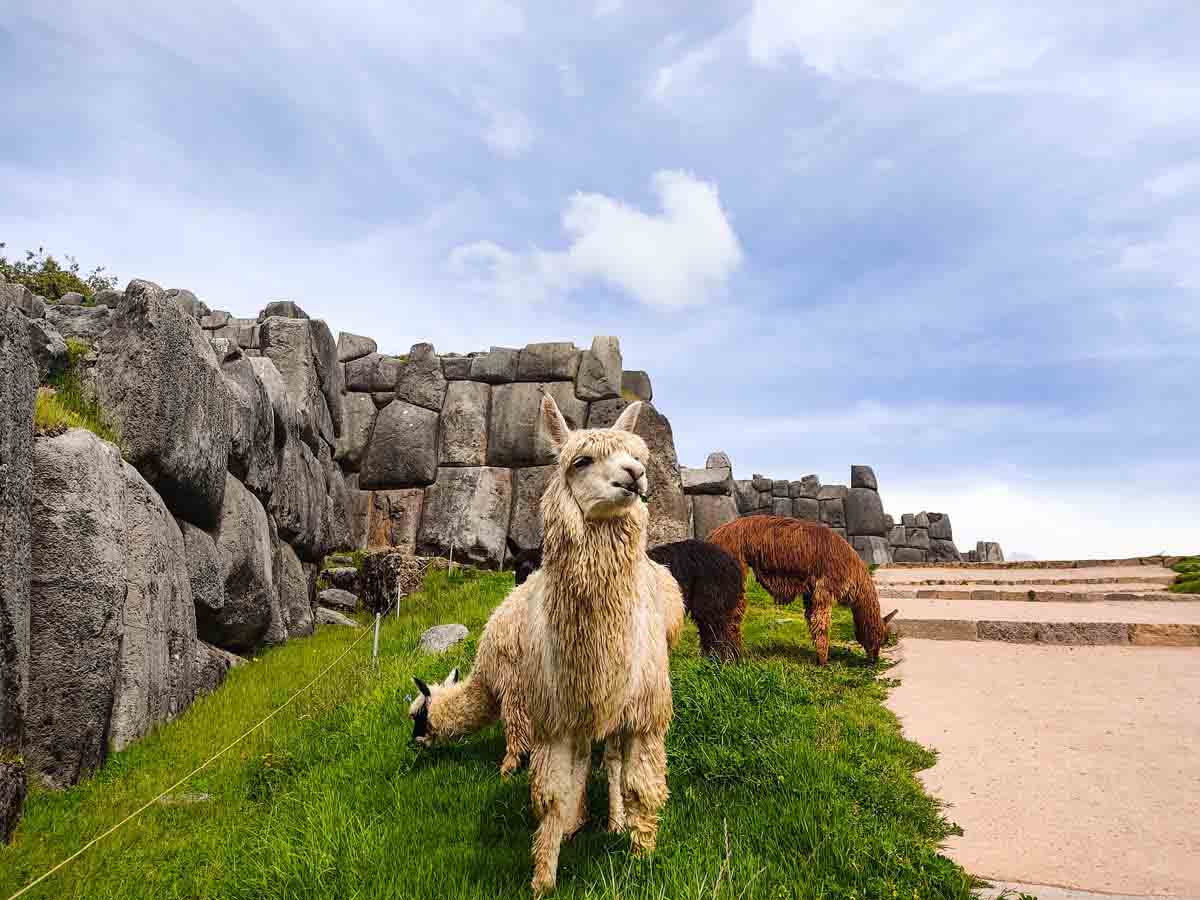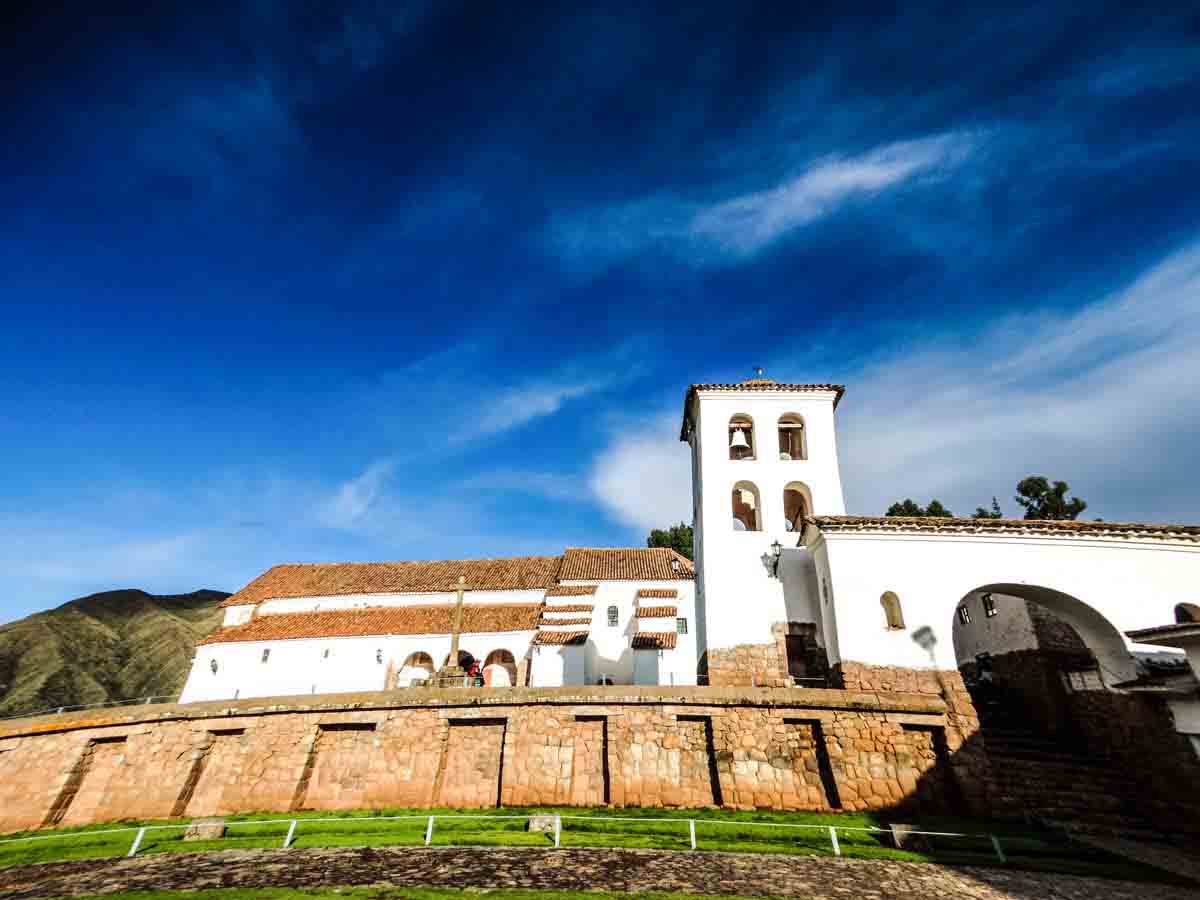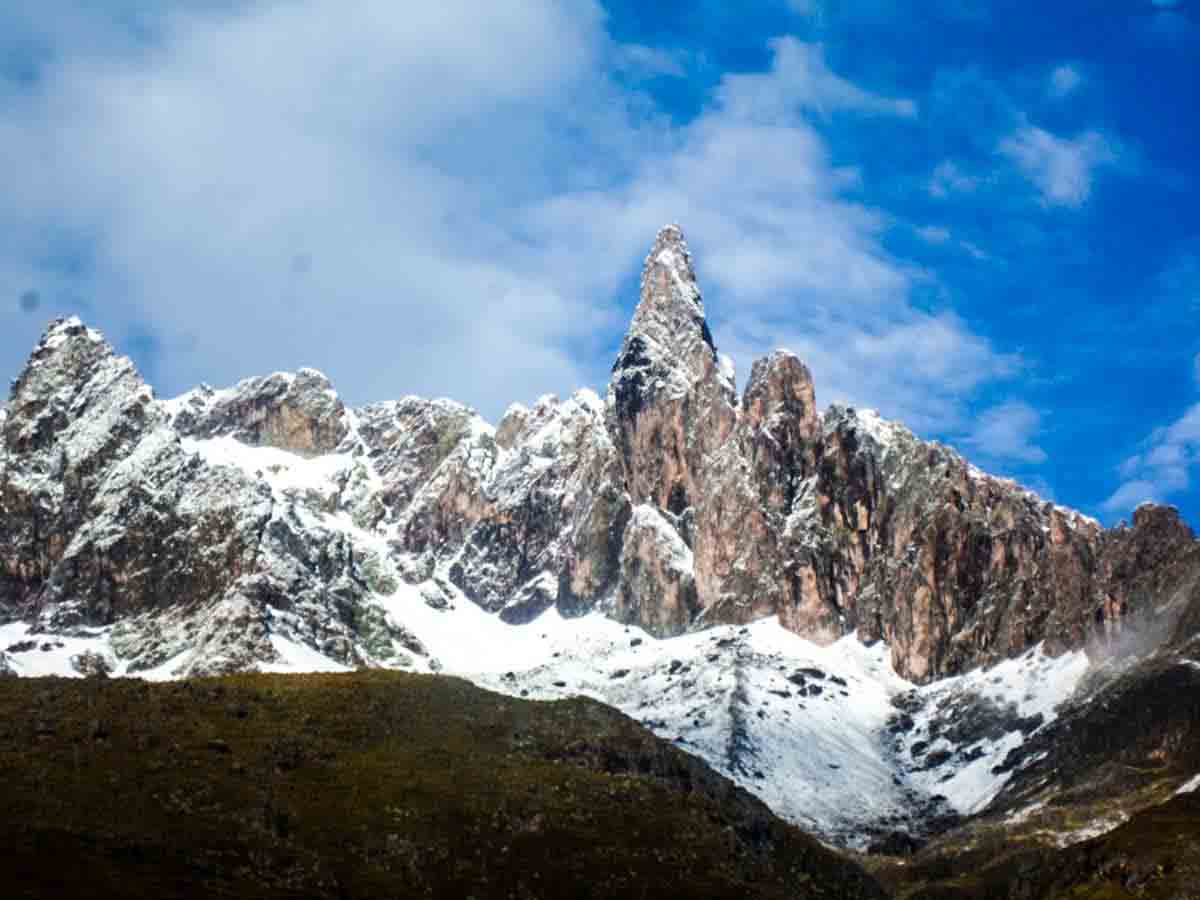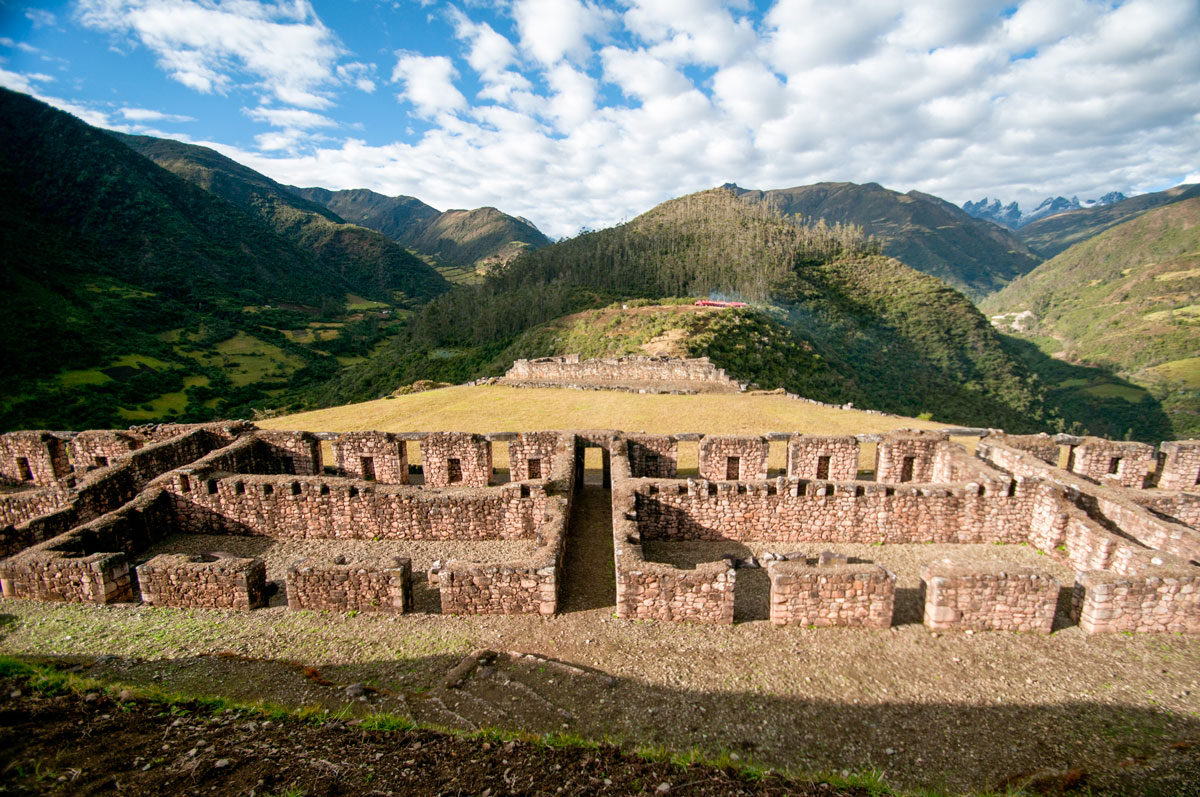
Comprises the areas of Sacsayhuaman, Qenko, Puca Pucara and Tambomachay. This is a moderate level trek and allows you to walk through the highway. This trek last about 3 to 4 hours and starts from the Saphy Street, near the main square. It goes through the neighborhood of Kolkampata to take the ascendant staggered zigzag that continues the course of the river Saphi. You only need 20 minutes to enter to Sacsayhuaman by the oriental end. From there, and after crossing the fortress, the route continues towards the Rodadero and the Amphitheater, where from it connects with the highway for approximately 2 km to the Northeast to get to Qenko. There is a quite pronounced footpath - also parallel to the highway - that takes us to Puca Pucara. From Puca pucara there are only some hundreds of meters to find the access road to Tambomachay.
For those who do not have prior experience we recommend hiring the services of a guide in Sacsayhuaman and return of Tambomachay by bus or taxi.

RELATED: HIKING TO SACSAYHUAMAN
A simple walk of low difficulty (almost everything is downhill) but requires 5 to 6 hours of walking. You depart from Chinchero towards the north across the system of platforms, a quite pronounced footpath (there are sections of the Inca Trail) descents across a stretch valley to the Tambo Inca ruins, a place of rest and supply in the epochs of the Incas. The route descents in the middle of the deep vegetation and breeding groups up to the Urquillos community. From there the way continues up to Huayllabamba, where it cross the Vilcanota River to get to the highway that covers the Sacred Valley between Calca and Yucay, approximately 10 km of Urubamba. We recommend departing from Chinchero before the middle day.

Located on the slopes of Yanaccaca Mountain (also called Raccay), in the south on the Calca Town, is one of the less visited place by tourist. Also known as Cacllacahuana ("where the beam can be seen" in quechua), it was the place of refuge place for the Yahuar Huaca Inca when the Chancas invade Cusco. It is still possible to see traces of buildings like the Temple of the Sun and the main neighborhood where a large room with a large rock is placed. This rock was for laminating gold (corricutana).
You get to the place by walking 7 km (about 2 to 3 hours) along a steep route from Calca or following the Inca Trail (24 km) that start in the Tampumachay archeological place, then surrounds the Qoricocha lagoon and crosses four steps of height above 4200 MAMSL.
We recommend start this route early from Cusco and be accompanied by a guide. Bring a jacket and water.
A hike of moderate demand (takes about 3 hours). To access to this archaeological place is necessary to start from the lower square of Ollantaytambo (right in front of the ruins). From there you follow an ascending path between agricultural terraces following the course of the Patacancha River. A km of walk leads you to the hamlet of Munaypata. Pumamarca is known for its walls in a zigzag pattern, presumably built as a defense mechanism.
RELATED: WHAT TO DO IN OLLANTAYTAMBO
One of the most popular Andean trekking of Peru, combines landscapes of extraordinary beauty in a circuit that allows you to make contact with a region almost unknown and populated by ancestral communities of shepherds and artisans. The Ausangate is also considered the apu or the tutelary divinity of the South Cusco region. The trek takes about 6 days and requires good physical condition, as well as support of muleteers and mules. The tour begins in the city of Cusco, following the route that leads to the villages of Huambutio, Huancarani, Catcca and Oconfate. The small hamlet of Tinki (3715 MAMSL) marks the end of the first day. This is the place where you contact guides porters and where it is possible to make late purchases of supplies.
On the second day you visit the community of weavers of Q'olamuro. This day concludes in the Upis town (4,400 MAMSL), located under the north face of the Ausangate.

The third day the north face of Ausangate is even closer to you, passing through Upispampa and then climbing towards Inkapampa and the abra of Arapa (4,670 MAMSL) to finally descend towards the placid Pucacocha lagoon (4,575 MAMSL), located in a beautiful setting of glaciers and snow-capped peaks. The fourth day is marked by a gentle ascent to the Alcatani (4,650 MAMSL) and the following descent into the beautiful glacier lagoon of Ausangatecocha. From there, a new ascent steep leads to the open Palomani (5,059 meters), from where we descent along the valley of Machuraqay and with the spectacular landscape of the snow-capped Mariposa Mountain on the southeast to the Chillcapinaya town (4,400 MAMSL) and the pampas of Waru Waru (4,450 MAMSL), the scenery of the last campsite of this adventure. The fifth day is a climb to abra of Jampa (4,950 MAMSL) between the steal mountains of Huamantilla and Ccallangate. Then we arrive to the Pachapata town where is possible to enjoy beautiful landscapes of the Qomerococha and Harmacocha lagoons, the route continues to the Pacchanta community where before a bath on the thermal water, the camp's farewell is made.
RELATED: RAINBOW MOUNTAIN PERU
This is a beautiful but intense hike with numerous steps at high altitude. Salkantay, in addition to being the tutelary Apu of Cusco, it is also vital for the water balance of the sanctuary of Machu Picchu. It lasts approximately 7 days and requires excellent physical conditions. It also requires support mules and porters. The excursion part in general starts from the Mollepata town (2,900 MAMSL in the Cusco-Abancay route) and then goes up to Parobamba (3,200 MAMSL) where the first campsite is. The second day takes you to walk between the communities of Cruzpata (3,250 MAMSL), Oncopata and Checchincha (3,600 MAMSL) with extraordinary landscapes of the Umantay and Yanantay mountain peaks. The day concludes in the cattle town of Soraypampa (3,750 MAMSL) at the foot of the majestic Salkantay (6,264 MAMSL).
The third day takes walkers to explore the slopes of Salkantay, crossing several high steps (including Inkachiriaska at 4,900 MAMSL) and. A descent towards Sisaypampa (4,200 MAMSL) leads to the second point of camping. The fourth day leaves the heights to descent to Paucarcancha (3,150 MAMSL) at the confluence of the valleys of Pampacahua and Keska. The fifth day allows you to connect with the famous Inca Trail to Machu Picchu after passing through Yunkachimpa and the forest of the Llullucha ravine.
On the next two days you will follow the Inca Trail to get to Machu Picchu on the sunset.
It is considered by experts among the most spectacular trekking circuits that allows you to explore the legendary mountain range of Carabaya (Origin of the Vilcanota Mountain range) with its landscapes of dream emerald lakes while you cross the territories of highlands communities that have little contact with the Western world. The tour concludes with a visit of the snow-capped mountain of Ausangate, consideres as the Apu or tutelary divinity of the region. The walk takes about 12 days and requires excellent physical condition as well as mules and muleteers.
The circuit starts from the city of Puno, on the shores of the Titicaca Lake and following the unpaved road leading to Pucara and Macusi. Always with the snowy Allincapac dominating the horizon, down to the village of Ollachea (2,150 MAMSL) where you sleep and the start the trek (be sure to visit the thermal baths). The first day we ascend above the Valley of the Corani River, crossing pre-Hispanic construction remains, and channels remains for camping in Marcapucara (4,100 MAMSL). A strong rise with four abras above the 4,300 MAMSL and one spectacular landscape of the Quelcaya snow-capped mountain that allows us to arrive to the small town of Corani and to the second camping site, in the surroundings of the Pajracunca town. The third day is less demanding. It is dominated by vast pampas and unique geological formations. The day culminates with a camp in the village of Colqa.
The fourth day begins with a visit of the near Viluya town, to continue to the Southwest, with the covered snow massif of the Quelcaya as guide, up to the Accoyo locality, a remote vale dedicated to the pasture of alpacas. Fifth Day: an ascent on 4900 MAMSL allows us to enter to the Vilcanota mountain range and to the department of the Cusco. Camp in Pampa Mates (4800 MAMSL). The sixth day is necessary transport to a new cove on 5000 MAMSL, then to descend towards the lake Amayani. The camp is located in the town of Cocauma, placed in the north. Eighth day: 5050 MAMSL leads a steep ascent towards the sources of the lake Sibinacocha and the point known as "the corner", a natural lookout of big beauty on the mountain range Vilcanota and its lakes of glacier origin. The second step of height, called a Vicuna (5100 MAMSL) allows us to discern the first, the majestic Ausangate, maximum summit of the Vilcanota Mountain Range. The day concludes by crossing of the abra Condor and the descent towards Kjampa to the camp (4750 MAMSL).
The ninth day is very demanding for the walkers. Two abras at a high altitude, to 5100 MAMSL, and to 5,280 MAMSL respectively, you need to be ready to camp on the skirts of the snow-capped Acero Mountain (4,900 MAMSL). The tenth day consists of a last ascent towards the snow-capped Snail Mountain followed by the descent towards the lagoon Q'omerococha and the town of Pacchanta and its relaxing thermal waters. The morning of the eleventh day contact point is used in the comeback to the town of Tinki (3715 MAMSL), with the highway that he leads to the city of the Cusco.
A strong and impressive trekking reserved for experts and adventure lovers. Take 4 to 10 days touring this beautiful but rugged territory limited by the peaks of the Vilcabamba mountain range (crowded by Salkantay, 6,264 meters above sea level), the south and the west, the Urubamba River and the rainforest of the Koshiereni River on the north (machiquenga ethnic territory). This spectacular circuit starts on the Chaullay town, located on the same side of the historic Choquechaca Bridge (bastion of the inca resistance in the 16th century). A hard road ascends from the village to the Vilcabamba River Valley to the town with the same name and the Yupanca, Pucyura y Huancalle towns (2,950 MAMSL) the end of the highway.

RELATED: Vilcabamba: know the lost city of the Incas in Cusco
During to visit Machu Picchu and Cusco, you can choose from a variety of tours. These range from full-day excursions to Inca Trail tours to the Sacred Valley trip. Multi-day tours can be combined with climbing Huayna Picchu, walking along the Urubamba River, following the authentic Inca paths, of which the most famous is the 4-day Classic Inca Trail, or visiting other archaeological sites such as Llactapata, Sacsaymarca, Phuyupatamarca and Wiñay Wayna. You can also add a Rainbow Mountain Peru into your itinerary since this is an increasingly popular hike leading through Andean villages with living traditions.
If you are looking for a shorter adventure, choose the Short Inca Trail. The best hiking alternatives to the Lost City of the Incas are so-called Alternative Treks to Machu Picchu.
If you don´t want to hike, we recommend you the best Machu Picchu day tours:
